 Drain cleaning can be a good thing for your Oklahoma City household plumbing, but it isn’t cheap to have it done professionally. While it may be something you want to schedule regularly with your Oklahoma City plumber, it isn’t something you want to be up against in an emergency. Having said that, millions of homeowners have found themselves in just such a position at one time or another. 99% of the time, these clogs could have been avoided by following some simple rules about what should go down the pipes and what shouldn’t. Stick to those rules, and you shouldn’t experience any trouble. Here are some of the most common clogs.
Drain cleaning can be a good thing for your Oklahoma City household plumbing, but it isn’t cheap to have it done professionally. While it may be something you want to schedule regularly with your Oklahoma City plumber, it isn’t something you want to be up against in an emergency. Having said that, millions of homeowners have found themselves in just such a position at one time or another. 99% of the time, these clogs could have been avoided by following some simple rules about what should go down the pipes and what shouldn’t. Stick to those rules, and you shouldn’t experience any trouble. Here are some of the most common clogs.
Hair
More than anything else, hair is the primary culprit behind most household clogs, especially as it pertains to the bathroom pipes. It’s only natural, of course. Shaving, grooming, even shampooing can cause you to lose quite a lot of hair over a short period of time. If you have people with long hair in your family, the chances of facing a clog in the near future grow ever more likely. While having everyone in the family shave their heads is a drastic measure to take, there are some simple steps you can take to avoid needing professional drain cleaning. Install some special filters or strainers and catch the hair rather than letting it flow into the pipes.
Cooking Oil
Pour a bottle full of vegetable oil down the kitchen sink and you probably won’t run into any problems. Pour that same amount down the hole after you’ve cooked with it and it may be the last thing that goes down without a fight. When it comes to your Oklahoma City kitchen sink, no substance creates as much need for drain cleaning as used cooking oil. Once it cools after cooking, it hardens into a white, sticky mess that clings to the side of your pipes. It doesn’t take many times of doing this before you’re facing a real problem with water flow. Instead of pouring it down the sink, pour it into a sealable bottle or can and throw it out with the trash.
Paper Products
Toilet paper is very light and practically disintegrates when put through the plumbing system. Paper towels, tampons, and feminine napkins are not the same and should never be flushed down the toilet. It is another of the most common reasons for a clog and it is why nearly all Oklahoma City drain cleaning specialists advise finding something else to do with these paper products.
Article Source: http://EzineArticles.com/?expert=Antoinette_Ayana
If you are looking for a professional Oklahoma City drain cleaning contractor, then please call us today at 405-802-7769 or complete our online request form.
 Whirlpool bathtubs have been around since the 1960s and until recently have remained unchanged. Although the basic concept of the whirlpool bathtub has remained the same, today’s jetted bathtubs are filled with innovative features and designed to be as aesthetically pleasing as they are comfortable and relaxing.
Whirlpool bathtubs have been around since the 1960s and until recently have remained unchanged. Although the basic concept of the whirlpool bathtub has remained the same, today’s jetted bathtubs are filled with innovative features and designed to be as aesthetically pleasing as they are comfortable and relaxing.
The basic jetted tub comes in two different forms: the drop in bathtub which has been around since the 1960’s and the free standing jetted bathtub a new innovation that came along in the late 90’s. The free standing bathtub has revolutionized the way people install Jacuzzi style bathtubs. Free standing bathtubs are not technically considered a fixture; the free standing bathtub installation has more in common with a washing machine then a recessed bathtub. They are built atop a stainless steel tubular frame which gives the unit added stability and elevates the unit so it can utilize any existing drain the sits beneath the base. Just based on ease of installation, free standing whirlpool bathtubs have become more popular than their old fashion drop in cousins. Your Oklahoma City plumber can install your free standing whirlpool bathtub easily and efficiently and have you up and running in no time.
Since free standing jetted bathtubs are supported by a tubular frame there is also additional room for features that until recently couldn’t be found in any bathtub. Chromo therapy lighting, FM radio, speakers and waterproof televisions are just a few extras that can be found in today’s free standing jetted bathtubs. Although they may not appeal to everyone, these new futuristic bathtubs have made quite a splash with the tech and gadget crowd.
Technically savvy bathers are not the only ones who gravitate towards the new self-supporting tubs. Oklahoma City interior designers and builders alike favor them for their ease of installation, low cost and wide variety of designs and styles. Unlike drop in Jacuzzi bathtubs, free standing units don’t just come in a few standard sizes; there are literally thousands of styles ranging from claw foot antique style jetted bathtubs to units inspired by our favorite aquatic life.
Compared to a standard whirlpool bath installation, a free standing jetted bathtub only takes a small fraction of the time, and they are designed for quick and easy remodels. The tubular frame has adjustable feet so the tubs can always be leveled even if your floor is not. The drain stub is also elevated and if there is an existing drain sitting underneath the base of the tub it can be attached easily with a Fernco connection. The water lines are connected via metal braided hoses ( ½” hot and cold). The electrical on free standing bathtubs ranges from unit to unit but many of them can simply be plugged into a standard outlet. The standard installation time for a prepped free standing whirlpool bath is around 15 minutes to an hour.
Overall if you are in the market for a whirlpool jetted bathtub for your Oklahoma City home, you might want to consider a free standing model. You will save money along virtually every part of the process as well as time and frustration. You will also find the selection of models, styles and colors to be superior to the traditional style bathtub.
Article Source: http://EzineArticles.com/?expert=Steve_D_Jones
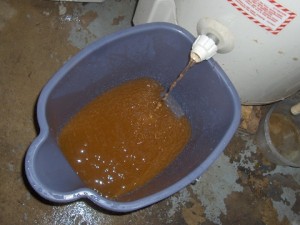 The plumbing system is a vital part of your Oklahoma City home and requires care to keep it functioning properly. The water heater is one important plumbing fixture that requires maintenance in order to keep it running efficiently. Over time, sediment and sludge can accumulate in a water tank which will make the heater less efficient and it will also shorten its life span which can be very expensive to replace. As well, the accumulation of sediment at the bottom of the water tank can solidify andclog the drain valve. To avoid sediment accumulation, it is important to drain the water heater to get rid of the debris and sludge.
The plumbing system is a vital part of your Oklahoma City home and requires care to keep it functioning properly. The water heater is one important plumbing fixture that requires maintenance in order to keep it running efficiently. Over time, sediment and sludge can accumulate in a water tank which will make the heater less efficient and it will also shorten its life span which can be very expensive to replace. As well, the accumulation of sediment at the bottom of the water tank can solidify andclog the drain valve. To avoid sediment accumulation, it is important to drain the water heater to get rid of the debris and sludge.
The following is a guide on how to drain a water heater:
1. The first thing you should do is shut off the power to the water tank. For a gas water heater, turn the thermostat to the ‘pilot’ setting. For an electric water heater, turn off the breaker at the main electric panel.
2. Next, turn off the main water source. There will be either a lever or knob on one of the water pipes coming out of the wall to the water heater. Turn it until the lever can no longer turn.
3. The next thing to do is locate the draincock. The draincock can normally be found at the bottom of the tank on the side. It looks like an outdoor tap. Get a garden hose and attach one end to the draincock and extend the other end outdoors so the water will drain outside and not on the floor.
4. Slowly turn the draincock to open and allow the water to flow through the hose and outside. Open the hot water faucet of the bathtub and let it run. Allow the water to run until you no longer see any sludge and debris coming out with the water. The water should be clear, not yellowish brown.
5. Close the drain valve and turn off the faucet.
6. Turn the cold water supply back on and allow the tank to fill. Turn the power supply back on after the tank has filled with cold water.
Water heater experts and your Oklahoma City plumbing contractor recommend that homeowners flush the sediment from their water tanks once or twice a year, depending on the quality of water in their area. If you live in an area with high mineral content in the water, draining twice a year may be necessary.
Generally, most Oklahoma City homeowners do not think about maintaining their hot water heater until it breaks down and they end up with an expensive repair bill or replacement tank bill. Because the hot water tank is an essential plumbing fixture, it is essential to make sure the unit is properly maintained. It is important to flush the water tank to help extend the life span of the water tank. Your Oklahoma City plumbing contractor has the experience and expertise to properly drain a hot water tank and check the tank for any potential problems.
Article Source: http://EzineArticles.com/?expert=Adriana_N
If you are looking for a professional Oklahoma City water heater contractor, then please call us today at 405-802-7769 or complete our online request form.
 Here’s a checklist that you can use to do your own pre-inspection on your plumbing. There’s no reason not to check your Oklahoma City home out yourself before you hire a certified home inspector.
Here’s a checklist that you can use to do your own pre-inspection on your plumbing. There’s no reason not to check your Oklahoma City home out yourself before you hire a certified home inspector.
This way you can compare notes and ask questions. He will give you a thorough report on the home’s condition. Between what you found and what the inspector found you will be able to take care of what needs to be done before you put your house on the market.
For now we’ll focus on plumbing, including bathrooms, the laundry area, and water and septic systems.
* Look for signs of leaks in exposed pipes, including in areas where pipes run through the walls or foundation.
* Look for signs of corrosion, which could indicate a problem with the water, or with the pipe itself. Are there green stains around brass and copper fittings and on shutoff valves? This is a sign of either corrosion or a reaction that occurs with mismatched metals. If this is left uncorrected, it will cause leaks and bad connections.
* Check water pressure. Low pressure could mean a problem with the line or sediment buildup in the faucet aerator or shower head.
* Check drains for speed of drainage. A slow drain may mean there’s a clog or a blocked vent pipe. Look for a full swirling drain. Bubbling drains are a sign of a problem.
* Flush toilets to make sure they operate as they should. Open their tanks and look for worn or missing parts. Wait around for a few minutes to see if the toilet runs after a while. This is a sign of a slow leak.
* If you have a gas water heater, look inside the burner chamber for rust flakes. Check the flame. It should be an even blue, with no yellow. A yellow flame indicates soot or a problem with the gas-air mixture. The jets may need cleaning.
* You may need help for this next task. It’s a good idea to drain the water heater to remove sediment that has settled to the bottom. If you have an electric water heater, turn it off first or you’ll burn up the heating element.
* Check for cracked tiles in the shower area or around sinks. Tap on tiles to find loose or hollow ones that could be masking rotted backerboard behind them.
* Check on the state of the tub and shower caulking. Is it time to replace it?
* Look for evidence of mildew wherever water has a chance to stand for longer periods of time.
* Check the toilet base to be sure it doesn’t rock. There could be a leak that has damaged the floor around it.
* Look for cracks on the toilet tank or bowl and also on sinks
* Slide shower doors to check for sticking or rust. Examine the gaskets around the door glass for any gaps or tears.
* Turn on the shower and bath faucets to check for leaks around the handles and valves. Are they easy to use, or harder to turn on and off? Check any set screws you see.
* Unscrew the shower head and look for collected sediment. This could be lowering the water pressure.
* Examine vent fans for blockages or dust. If it sounds really loud when you turn them on, the bearings may be worn out or a flapper may have gotten stuck.
* Check washing machine hoses for signs of cracks, brittleness, or leaks.
* Check the dryer vents for tears. Vacuum or brush out lint in the hose and around the lint screen inside the dryer. Look for lint around the floor or on the wall, which indicates there’s a clog in the vent hose.
* If you have your own well for water, send out a sample of your water to your county cooperative extension to test it for chemicals and bacteria.
* Be sure that the well cover is tightly sealed but that there is still access to the pump.
* Check the sump pump by pouring water on it to see if it turns on automatically.
* Look around your septic tank/field for soggy ground or lush vegetation. This may mean the tank is full or failing.
Being familiar with your Oklahoma City home inside and out will give you an advantage when dealing with your home inspector and prospective buyers.
If you determine there are some plumbing issues, get with your Oklahoma City plumbing contractor to take care of any issues and make any plumbing repairs necessary to successfully pass the inspection.
Article Source: http://EzineArticles.com/?expert=David_Haigh
f you are looking for a professional Oklahoma City plumbing repair contractor, then please call us today at 405-802-7769 or complete our online request form.
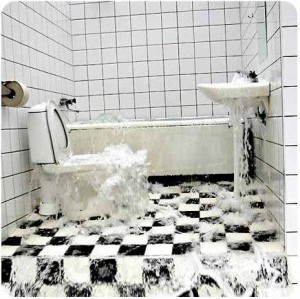 Have you called in for your Oklahoma City plumber to come fix a water-related plumbing emergency at your home? Plumbing is a field that is best left to the experts since it requires specialized knowledge and equipment. However, there are quite a few things that you could do in order to reduce the damage before the experts arrive.
Have you called in for your Oklahoma City plumber to come fix a water-related plumbing emergency at your home? Plumbing is a field that is best left to the experts since it requires specialized knowledge and equipment. However, there are quite a few things that you could do in order to reduce the damage before the experts arrive.
1. Cut off the water supply: If the problem in your Oklahoma City home is caused by a burst pipe then you should immediately cut off the water supply to it. While this does not solve the problem, it at least ensures that no additional water enters your home.
2. Remove as much water and debris as you can: There is bound to be a lot of water and debris messing up the floors of your house if you have an overflowing sink or toilet or even a burst pipe. If you do not clear this water away immediately (after shutting off the supply) then it will work its way to the lowest parts of your home, causing a great deal of damage. This might not be a pleasant task, but if you sit around waiting for the plumber to arrive then it is your Oklahoma City home that will get damaged.
3. Remove furniture that might get damaged: It is a good idea to move carpets, furniture etc. to locations where they cannot come in contact with water. Keep in mind that the repair process might be a very messy one. Also note that your Oklahoma City plumbers might track unsanitary material into your home without meaning to. It might not be possible to remove carpets leading up to the room where they will work. If so, you should at least place mats or newspapers on them.
4. Clear the work area: Remove toiletries, potted plants etc. from the bathroom counter so that the plumbers can work easily. The same applies to kitchens where the countertops might have equipment and utensils. Not only will this make the plumber’s job easier but it will help prevent these objects getting contaminated by dirty water.
5. Keep kids and pets out of the way: Repair work will happen easily if there are no kids or pets getting in the way. It is best to keep them engaged in a separate part of the house so that no disruptions occur.
You will be able to get the best possible work out of your Oklahoma City plumbers as long as you do these things.
Find out what you need to do while you wait for plumbers in Oklahoma City to arrive to fix a problem. These tips will help you restrict damage to your property and reduce the time that the workers spend in your home.
Article Source: http://EzineArticles.com/?expert=Rizvana_Abdul
If you are looking for a professional Oklahoma City plumbing repair contractor, then please call us today at 405-802-7769 or complete our online request form.
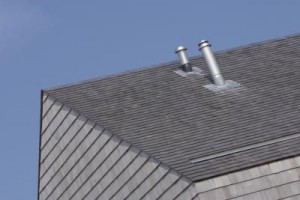 Plumbing Vents in Oklahoma City
Plumbing Vents in Oklahoma City
A plumbing vent is basically a special pipe (or network of pipes) that leads from an appliance located inside your Oklahoma City home to the outside of your home. Although not always, many of these will lead to the roof. Also, many vent pipes are comprised of more than one pipe. So what purpose does a vent serve with regard to your plumbing?
What Do They Do
Unlike the other pipes in your system, vent pipes do not carry water. Instead they carry sewer gases safely from the inside of your home to the outside environment. This is an extremely important part of your Oklahoma City home plumbing. Residents should always ensure these vents are in good working order. Should you suspect they are not in good working order, it would be wise to contact your Oklahoma City plumber immediately.
Sewer Gases
Sewer gas can make you very sick. Without these vent pipes, these gases would build up in the system and eventually emanate out of your drains and taps and into your Oklahoma City home. The vents allow the gases to escape so they won’t build up.
As you can see, vents are an essential part of your plumbing. Oklahoma City community residents are required to maintain working plumbing vents for each of their appliances in order to comply with local and state building codes.
Article Source: http://EzineArticles.com/?expert=Dave_Fraelich
If you are looking for a professional Oklahoma City plumbing repair contractor, then please call us today at 405-802-7769 or complete our online request form.
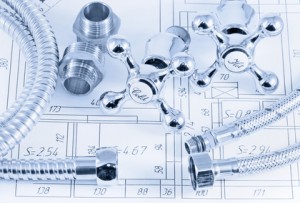 One of the most common Oklahoma City plumbing problems in most homes is clogged drains. This is something that must not be ignored, or else, you will be faced with bigger problems, especially with the internal structures and on your pipelines. While calling a plumber may be the first thing that will come to your mind when it comes to this ordeal, you can opt to deal with the situation on your own if the problem appears to be manageable.
One of the most common Oklahoma City plumbing problems in most homes is clogged drains. This is something that must not be ignored, or else, you will be faced with bigger problems, especially with the internal structures and on your pipelines. While calling a plumber may be the first thing that will come to your mind when it comes to this ordeal, you can opt to deal with the situation on your own if the problem appears to be manageable.
What to do?
You can deal with clogged drains by applying a technique that works most of the time. Here’s what you ought to do. Start performing the task if there is standing water. If there is none, you can opt to pour water into the area where the problem appears. The drains and air vents must be sealed. You can put the suction cup of your plunger on the drain until you are quite certain that everything has been covered.
You have to exert effort in pushing and pulling that suction. You have to remember that you are doing this for the clog to move. After several times of pushing and pulling, you can remove the plunger. You simply have to observe at this point if the water is already going down the drain quite easily. If there still seems to be a problem, no matter how minor it is, you simply have to repeat using the plunger until the problem is completely solved.
Checking Various Parts of Your Home
There are vital parts of your home that you need to regularly check for clogged drains. This is important in order to save water and save yourself from spending too much on replacing damaged pipelines and other fixture.
For the sink on your bathroom and kitchen, you must first make sure that all the air holes are covered with duct tape or cloth. Use the plunger as instructed above. While many homeowners opt to use expensive cleaning agents, it is best that you first try fixing the problem with a plunger in order to save some bucks in the task.
If the problem with clogged drains happened on your bathtub, you must first pull off the overflow cover plate. You can then put a rag onto the hole and start plunging the drain. For the showers, since there are no air holes that you need to cover, you can simply proceed in plunging the drain.
 A kitchen faucet aerator helps reduce the water flow thus conserving water. Most plumbing fixtures come equipped with this useful device so most likely yours do too. Aside from conserving water, this device also keeps the water coming out of the spout from splashing all over.
A kitchen faucet aerator helps reduce the water flow thus conserving water. Most plumbing fixtures come equipped with this useful device so most likely yours do too. Aside from conserving water, this device also keeps the water coming out of the spout from splashing all over.
As time passes, this part of the fixture gets clogged due to water pressure and sediment. When this happens, this causes the fixture’s spout to either spray water or get obstructed so as not to produce any flow. The good thing, however, is that this part of the fixture can be easily replaced. Anyone can remove it and replace it in a matter of a few minutes as long as you have all necessary tools handy.
So what do you need when fixing this?
You must have a pair of pliers handy, a dish towel, some masking tape, a bowl, a toothbrush and white distilled vinegar.
So how do you go about replacing this device?
The procedure is as follows:
1. First clear the sink with any dishes and plug the sink drain with the stopper. Now for a work space, place a dish towel on the counter top. Get your bowl and pour about half an inch of white distilled vinegar on it.
2. Proceed to remove the aerator from the fixture. This is done by twisting it in a clockwise direction to unscrew it. You may need a pair of pliers to do this if you encounter some difficulty using your hand. If you are going to use a pair of pliers to unscrew it, protect the finish by wrapping some masking tape around its edge first.
3. Disassemble the device and make sure that you remember the order each of the pieces are in so you won’t be having difficulties reassembling later. To help you remember, lay the pieces across the dish towel. Top pieces on the left side of the towel and bottom pieces on the right side o the towel.
4. Soak the pieces in the white distilled vinegar for about an hour. Why is this necessary? Vinegar can dissolve hard mineral and water deposits so putting the wire mesh and other clogged pieces in this solution will clear the device of any obstruction and make it work again.
5. If there are any remaining deposits on the components, use a toothbrush to remove them before rinsing the pieces with water.
6. Reassemble the unit and screw it back in place. Turn the fixture on to test it.
If you find your kitchen faucet aerator to be worn out totally or damaged, you may have to buy a new one. You can find a replacement from the nearest Oklahoma City home improvement shop.
If you find that even replacing the aerator does not alleviate the problem, it would be a good idea to contact your Oklahoma City plumber. He can identify the problem and provide a solution quickly and efficiently.
Article Source: http://EzineArticles.com/?expert=Julio_Lanford
If you are looking for a professional Oklahoma City plumbing repair contractor, then please call us today at 405-802-7769 or complete our online request form.
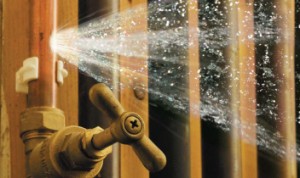 Burst pipe plumbing emergencies can strike at any time and catch us unaware. While we wait for our Oklahoma City plumber, water leaks out of the pipe and floods the floor at a rapid rate. Aside from wasting gallons of water, split pipes cause costly water related damage to walls, floors and your indoor belongings. Water related plumbing emergencies can be damaged controlled by closing the water shutoff valve to your Oklahoma City home. Get to know where your water shutoff valve is located should you encounter water related plumbing emergency or even a running toilet. Close water supply and save on money and water.
Burst pipe plumbing emergencies can strike at any time and catch us unaware. While we wait for our Oklahoma City plumber, water leaks out of the pipe and floods the floor at a rapid rate. Aside from wasting gallons of water, split pipes cause costly water related damage to walls, floors and your indoor belongings. Water related plumbing emergencies can be damaged controlled by closing the water shutoff valve to your Oklahoma City home. Get to know where your water shutoff valve is located should you encounter water related plumbing emergency or even a running toilet. Close water supply and save on money and water.
Home water supply systems contains main and master shutoff valves for stopping water flow to entire house or to specific plumbing fixtures. Most water meters have a shutoff valve before the meter and one after meter. Cold climate properties have their water meter located in warm indoor spaces like basements to prevent freezing complications. Milder climate homes have their water meter attached to an exterior wall or nestled in an underground box with a removable lid. Between the street’s water main and meter are located a buried curb stop valve and a corporation stop, where your Oklahoma City home’s water supply connects to water mains. Both the curb stop valve and corporation stop are inaccessible to the public, only to city workers with special tools.
In addition to the water meter, modern Oklahoma City homes also have localized shutoff valves with handles, called fixture supply stops, and located on water supply pipes to toilets, faucets, washing machines, water heaters, dishwashers, and water softeners. Closing the water supply to one of the above fixtures is a matter of turning the handle clockwise two to four full turns. Older homes have one fixture supply stop on the water supply to the toilet only.
Your Oklahoma City plumber highly recommends people to get to know their water shutoff valves and avoid expensive water related damages, high water bills, and water wastage.
Article Source: http://EzineArticles.com/?expert=Samantha_Richardson
If you are looking for a professional Oklahoma City plumbing repair contractor, then please call us today at 405-802-7769 or complete our online request form.
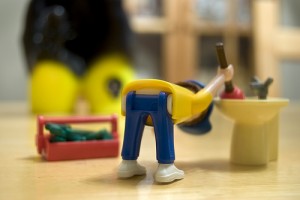 Plumbing is a professional trade and it is vital that your Oklahoma City plumber has the correct tools of the plumbing trade to be able to do a variety of different jobs, from plumbing installations to maintenance work. Ideally they should use tools that are manufactured specifically for the trade. When assembling a plumbing tool kit, plumbers will consider all their needs from spades and shovels for digging trenches, leveling tools including spirit levels and dumpy levels, to specialized video inspection equipment for checking drains. Here we are going to look at some of the more common, but specific plumbing tools.
Plumbing is a professional trade and it is vital that your Oklahoma City plumber has the correct tools of the plumbing trade to be able to do a variety of different jobs, from plumbing installations to maintenance work. Ideally they should use tools that are manufactured specifically for the trade. When assembling a plumbing tool kit, plumbers will consider all their needs from spades and shovels for digging trenches, leveling tools including spirit levels and dumpy levels, to specialized video inspection equipment for checking drains. Here we are going to look at some of the more common, but specific plumbing tools.
Tools for clamping and tightening
Plumbers need a selection of metal spanners and wrenches that they can use to clamp pipe work and tighten and undo nuts and bolts. There are various types including open-ended spanners, ring spanners, socket spanners, box spanners (or basin spanners) and invaluable shifting spanners that are adjustable. They also use various pliers and vices, including a vice-grip, which is a particularly useful multi-purpose tool that has an adjustable jaw. Pipe wrenches, which are manufactured in different sizes, are often called monkey wrenches (or a bobbejaan spanner) in South Africa, because its side view looks a bit like a monkey or baboon. Metal clamps of various sorts are also commonly included in a professional Oklahoma City plumber’s toolkit.
Tools for bending
Plumbers need special tools and machines to be able to bend mild steel and copper pipe. Copper may be bent using a bending spring, with hand or scissor-type benders, or with stand-type benders manufactured specifically for bending hollow copper pipe, which is a relatively soft metal. Small diameter mild steel pipes may also be bent with stand-type benders that are attached to a workbench. Large mild steel pipe will have to be bent using a more powerful hydraulic bending machine.
Tools for cutting
There are many different cutting tools that can be used to cut pipes and other plumbing materials. However it is essential for your Oklahoma City plumber to use the correct tools for the job at hand. For example, hand-held pipe cutters are intended for cutting copper pipe and for deburring the inside of the pipe after cutting. Hacksaws are commonly used for cutting plastic pipe and thin mild steel or even copper pipe. However, more sturdy cut-off machines (which look like circular wood saws) are normally used for thicker pipe and other metal. Many plumbers also use old fashioned tin snips to cut thin sheet metal.
Tools for making thread in pipes
While some pipes are welded or soldered together, other types are joined with special connectors. When plumbers work with galvanized mild steel pipes, they normally cut a thread into the pipe so they can screw two pieces of pipe together. They use hand thread taps as well as special machines to do this.
Tools for clearing and cleaning drains
There are various specialized plumbing tools that plumbers use to both clear and clean drains. The most common are powerful jetting machines that come with various nozzles and heads. They can be used to get rid of sand, grease and even the roots of trees growing inside drains. They also use jetting machines to descale pipes and to clean sewers, which are on municipal or public Oklahoma City property.
Article Source: http://EzineArticles.com/?expert=S_Burton
If you are looking for a professional Oklahoma City sewer line contractor, then please call us today at 405-802-7769 or complete our online request form.
Next Page »
 Whirlpool bathtubs have been around since the 1960s and until recently have remained unchanged. Although the basic concept of the whirlpool bathtub has remained the same, today’s jetted bathtubs are filled with innovative features and designed to be as aesthetically pleasing as they are comfortable and relaxing.
Whirlpool bathtubs have been around since the 1960s and until recently have remained unchanged. Although the basic concept of the whirlpool bathtub has remained the same, today’s jetted bathtubs are filled with innovative features and designed to be as aesthetically pleasing as they are comfortable and relaxing.
 Drain cleaning can be a good thing for your Oklahoma City household plumbing, but it isn’t cheap to have it done professionally. While it may be something you want to schedule regularly with your
Drain cleaning can be a good thing for your Oklahoma City household plumbing, but it isn’t cheap to have it done professionally. While it may be something you want to schedule regularly with your  The plumbing system is a vital part of your Oklahoma City home and requires care to keep it functioning properly. The water heater is one important plumbing fixture that requires maintenance in order to keep it running efficiently. Over time, sediment and sludge can accumulate in a water tank which will make the heater less efficient and it will also shorten its life span which can be very expensive to replace. As well, the accumulation of sediment at the bottom of the water tank can solidify andclog the drain valve. To avoid sediment accumulation, it is important to
The plumbing system is a vital part of your Oklahoma City home and requires care to keep it functioning properly. The water heater is one important plumbing fixture that requires maintenance in order to keep it running efficiently. Over time, sediment and sludge can accumulate in a water tank which will make the heater less efficient and it will also shorten its life span which can be very expensive to replace. As well, the accumulation of sediment at the bottom of the water tank can solidify andclog the drain valve. To avoid sediment accumulation, it is important to  Here’s a checklist that you can use to do your own pre-inspection on your plumbing. There’s no reason not to check your Oklahoma City home out yourself before you hire a certified home inspector.
Here’s a checklist that you can use to do your own pre-inspection on your plumbing. There’s no reason not to check your Oklahoma City home out yourself before you hire a certified home inspector. Have you called in for your
Have you called in for your  Plumbing Vents in Oklahoma City
Plumbing Vents in Oklahoma City One of the most
One of the most  A kitchen faucet aerator helps reduce the water flow thus conserving water. Most
A kitchen faucet aerator helps reduce the water flow thus conserving water. Most  Burst pipe plumbing emergencies can strike at any time and catch us unaware. While we wait for our
Burst pipe plumbing emergencies can strike at any time and catch us unaware. While we wait for our  Plumbing is a professional trade and it is vital that your
Plumbing is a professional trade and it is vital that your 